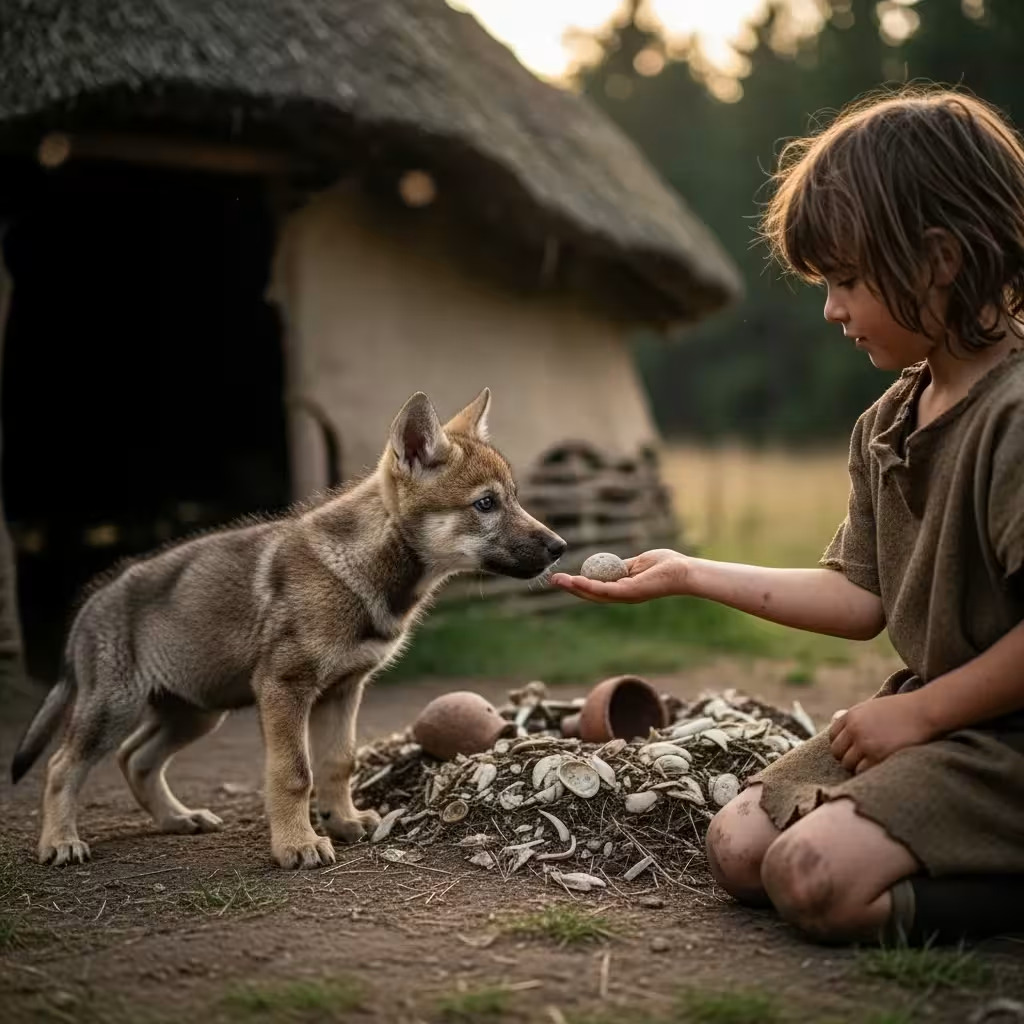
The Domestication Debate: How Did It Begin?
The story of how wolves became dogs is not a single, straightforward event. Scientific evidence from archaeology and genetics suggests a long, complex process that may have happened in different ways in various parts of the world. The timeline is also a subject of active research, with estimates for the initial split ranging from 15,000 to as far back as 40,000 years ago. Two primary theories dominate the discussion on how this monumental shift occurred.
Hypothesis 1: The Commensal Scavenger Path (Self-Domestication)
The most widely supported theory today suggests that wolves essentially domesticated themselves. The process began when early human societies started to become less nomadic, creating semi-permanent settlements. These settlements produced refuse piles—middens of leftover food, bones, and other waste. For a wolf, this was a new, reliable, and relatively low-risk food source.
However, approaching a human camp required a specific temperament. The most fearful and aggressive wolves would have stayed away. But individuals that were naturally a bit bolder, less skittish, and more curious would have dared to venture closer to scavenge. These “friendlier” wolves were more successful in this new ecological niche. They ate better, survived longer, and produced more offspring who inherited their tolerant temperament.
Over hundreds or thousands of generations, natural selection favored wolves that could co-exist on the periphery of human society. This wasn’t a conscious choice by people to “tame” wolves; rather, it was an evolutionary process where the wolves best adapted to the human-created environment thrived. This is often called the “survival of the friendliest” model. Humans may have tolerated their presence because these “proto-dogs” acted as an effective alarm system, barking at strangers or other predators that approached the camp.
Hypothesis 2: The Human-Initiated Capture Path
An older, more traditional theory proposes a more active role for humans from the start. This model suggests that hunter-gatherers captured wolf pups, perhaps taking orphans from a den after a hunt. Raised by humans from a young age, these pups would have been socialized to people and formed strong bonds, a process known as taming.
While an individual tamed wolf is not a domesticated animal—domestication is a genetic change across a population—this process could have been the starting point. Humans would have quickly recognized the value of their canid companions. These tamed wolves could have served as hunting partners, guards, or even beasts of burden. Humans would have then selectively bred the most cooperative, useful, and least aggressive individuals, intentionally guiding their evolution over generations.
It is entirely possible, and even likely, that the true history of dog domestication is a blend of both scenarios. Self-domestication may have started the process, creating a population of human-tolerant wolves. From this group, humans may have later adopted pups and begun the process of artificial selection, accelerating the changes that would ultimately lead to the domestic dog.















